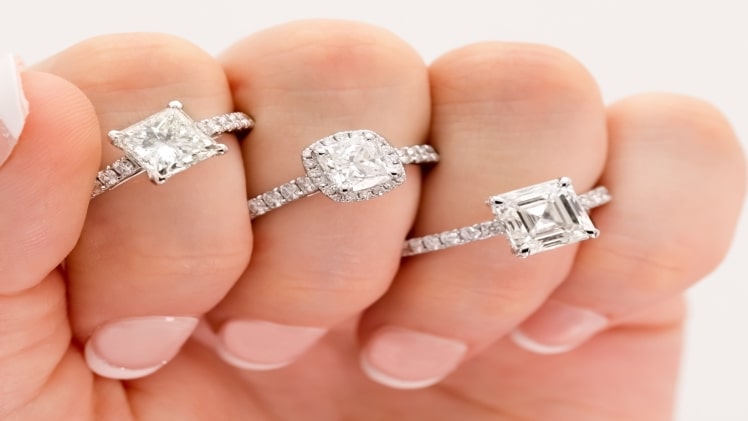The differences between lab diamond vs natural are not visible to the naked eye. However, scientists and gemologists can tell the difference by examining their chemical properties. A natural diamond contains tiny amounts of nitrogen, whereas a lab-grown one does not. The presence of this element is a key indicator of the quality of a diamond. Although the difference between a natural and a laboratory-grown one may seem negligible, it’s an important distinction.
Same allure and true value
Although lab diamonds may be pretty, they don’t have the same allure and true value as natural diamonds. They also have more value compared to their counterparts. In addition to being more beautiful, natural diamonds are better for engagement rings. And because they are less rare, they will continue to fall in value. You can find both types of diamonds in the market, and the decision is ultimately up to you.
Natural diamonds can be more expensive than lab-created diamonds, but they are not colorless. While natural diamonds are usually more costly, they can still be found in a store or online. Moreover, natural diamonds are rare, which means that their prices will not be as high as lab-created ones. And while they may be more affordable, the natural diamonds are more limited. For this reason, you may want to consider a lab-created diamond instead.
The price
The biggest difference between a natural diamond and a lab-grown diamond is the price. A natural diamond costs around 30% more than a lab-grown diamond. But the difference between a natural and a lab-grown diamond is only about $15 compared to a lab-grown diamond. Furthermore, a lab-grown stone typically loses less value than a natural diamond. But you can still trade in your natural diamond for a hefty profit. If you’re thinking of buying a jewelry piece, a lab-grown stone is a great choice.
Another difference between a natural and a lab-grown conflict free diamond is its composition. Organic diamonds are more valuable than lab-grown ones. Despite the difference in their composition, they’re both still a good investment. If you’re considering a diamond as a gift, make sure to consider the environment’s sustainability and the longevity of its lifespan. It can make or break a piece of jewelry, so it’s always best to check before making the purchase.
There are several differences between a natural and a lab-grown diamond, as well as their price. Both types of stones are beautiful, but there are some significant differences. A natural diamond has a higher cut quality, but a lab-grown diamond has a lower cut quality. A lower cut quality will increase the price of a stone. The price of a natural diamond is determined by its rarity. Hence, it is better to buy a naturally-grown diamond than a synthetically-grown one.
Quality of the diamond
The cost of a natural diamond depends on the quality of the diamond. The latter is the more affordable option, but you will still have to pay for the labor and materials to mine it. The difference between a natural and lab-grown diamond is also a major factor in its durability. A natural diamond has the greater durability, but a lab-grown one is more durable and more affordable. It is more expensive, but it’s still worth it to consider the environment’s impact on your daily life.
Rare and costly stone
A natural diamond is a rare and costly stone. If you buy it from a store, chances are you’ll get a lab-grown diamond with similar properties. But a natural diamond has a higher Mohs rating and is more durable. A laboratory-grown one will cost you much less, but you will still have to be careful when buying one. If you’re buying a natural diamond, make sure to read the fine print.
Last Thought:
Natural diamonds are more expensive. They are much more rare. They can be found in only a few locations, but are also extremely rare. Those who want a diamond with a higher karat weight should opt for the latter. A natural diamond will cost more, but you can buy a lab-grown version for about half the price. The quality of the stones is the same. Its cut, clarity, and carat weight are the only differences between natural and lab-grown diamonds.

